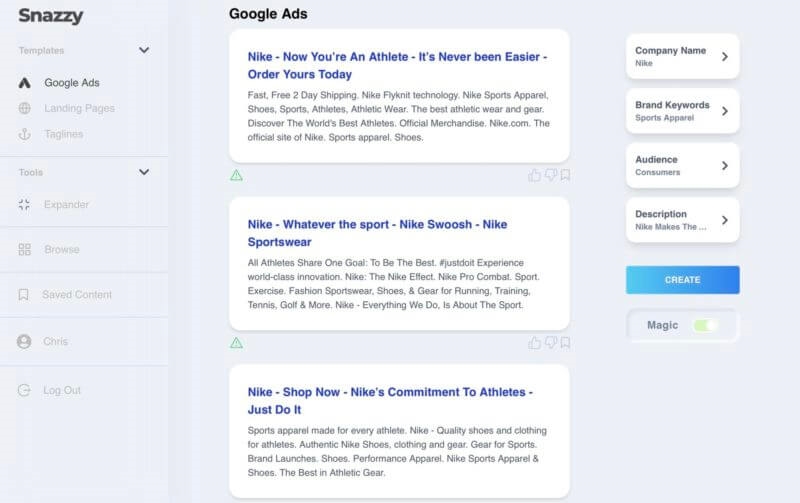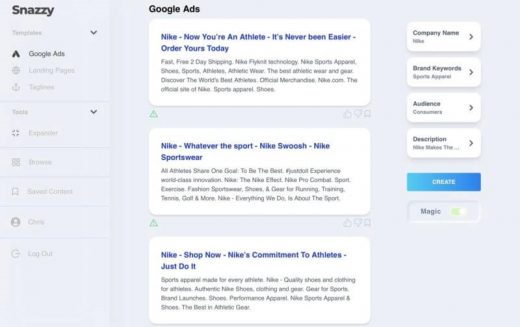New GPT-3 solutions can help speed up PPC ad and landing page copy creation
AI-generated copy isn’t perfect, but these tools can churn out ideas and inspiration in a matter of seconds.
Artificial intelligence-written articles and copy have been around for several years now, but GPT-3 promises to take AI-produced copy to the next level.
GPT-3 is Open AI’s powerful autoregressive language model that is capable of generating human-like natural language. What makes GPT-3 so much better than its predecessors is the size of its training data. GPT-3 has 175 billion parameters, “10x more than any previous non-sparse language model,” according to OpenAI researchers.
New GPT-3 powered solutions for marketers. One thing that makes GPT-3 particularly useful for marketers is that it doesn’t require complex coding to get results. You can feed it instructions in plain English.
Is GPT-3 ready to take over your marketing copy duties? No, but there is inspiration to be had. Several solutions have begun popping up to help marketers create ads, landing pages, blog posts and more within minutes, even seconds.
Snazzy, for example, uses the OpenAI API (which launched in beta in June) to generate copy via GPT-3 for Google Ads, landing pages and taglines. More options, including emails, blog posts, Facebook Ads, and product descriptions are in the works.
Copysmith and Copy.ai are other GPT-3 marketing content creators with various templates for ads, blog posts and more.
Getting started is simple. You feed in some training data such as company name, brand keywords, target audience and a description, and within seconds, you’ll get suggested copy back.
The Google Ads template in Snazzy, for example, will give you three to five standard text ad variations, each with three headlines and two descriptions. In the example below, the “Magic” button is enabled, meaning it will automatically generate ads based on the seed data you provided. When turned off, you can enter existing ad copy and it will generate new suggestions based on that copy and your seed data.

Helpful assistance. With any of these solutions, don’t expect perfection. You’ll need to edit and finesse, and changing the inputs can also help refine the GPT-3 suggestions.
The models will continue to improve, and you can quickly see how refining your own inputs can influence the outputs. The machines aren’t going to take our jobs just yet, but these tools can produce some remarkable content, help speed up the creation process and inspire new creative angles you might have missed.
This story first appeared on Search Engine Land.
(109)



